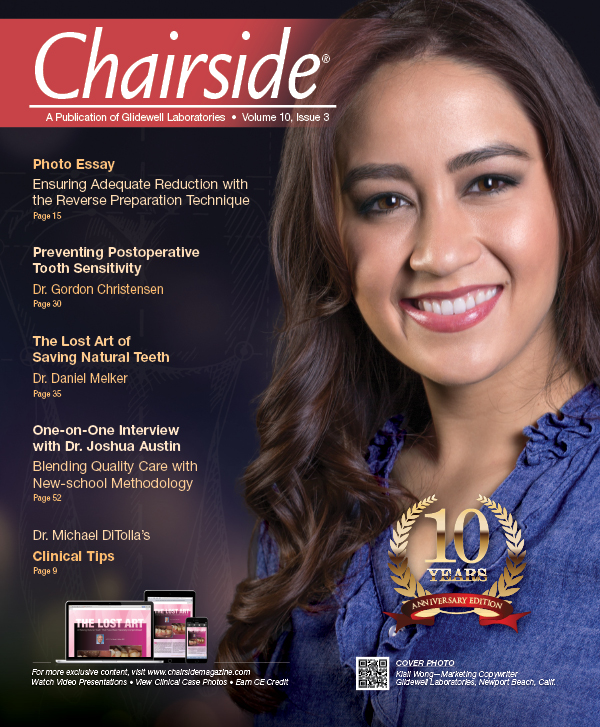Editor's Letter
Sometimes I feel like a broken record when I complain about the lack of adequate reduction that we see in the lab on an ongoing basis. Since we started scanning every case that comes into the laboratory three years ago and designing all of our crowns digitally with CAD software, it has been easy to identify exactly how much occlusal reduction dentists have done. To be more accurate, what we are actually measuring is how much room they have left us to fabricate the restoration they have prescribed.
Part of the blessing of monolithic restorations is the decreased occlusal reduction requirements: IPS e.max® can be fabricated as thin as 1.0 mm (although we prefer 1.5 mm), and BruxZir® Solid Zirconia can be fabricated as thin as 0.6 mm (although we prefer 1.0 mm).
But even with those reduced reduction guidelines, the software still tells us that nearly 60% of the preparations that we receive for these monolithic restorations are underprepared by dentists. I was a chronic under-prepping dentist for the first 15 years of my career. I was only cured by moving here and getting yelled at by technicians. That’s where the Reverse Preparation Technique came from: Self-preservation. This technique does not take a lot of skill or artistic ability; it simply takes a couple of specialized burs, some patience, and the desire to provide your laboratory technician with the best preparation possible.
As a dental student who spent his Saturdays in a remedial operative clinic, I am proof that you do not have to have above-average hands to get above-average results. Today I believe quality to be a choice, not an endowment parceled out to a select few. On behalf of not only our technicians but also dental technicians throughout the land, I hope you’ll try the technique covered in this issue’s Photo Essay. It’s up to you to make sure your dental technician can give you a functional restoration that is esthetic as well. Your patients will thank you, too!

Yours in quality dentistry,

Dr. Michael C. DiTolla
Editor-in-Chief, Clinical Editor
mditolla@glidewelldental.com


